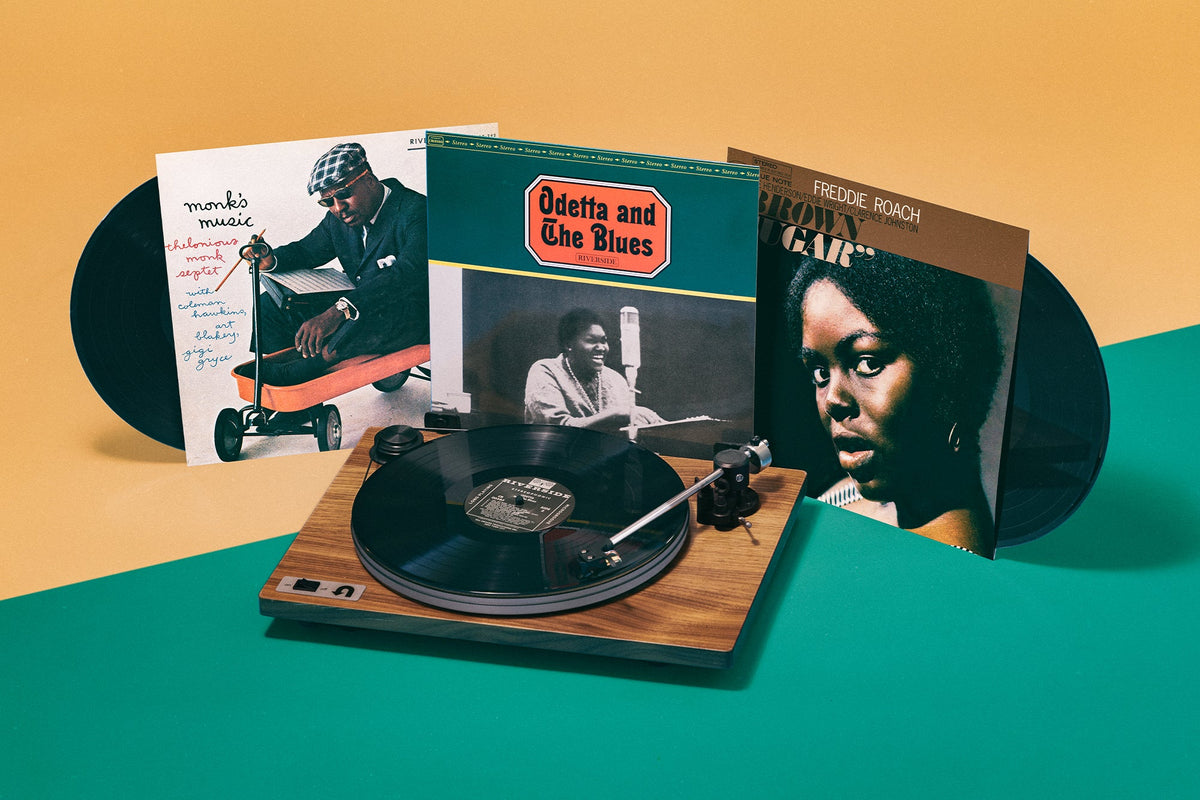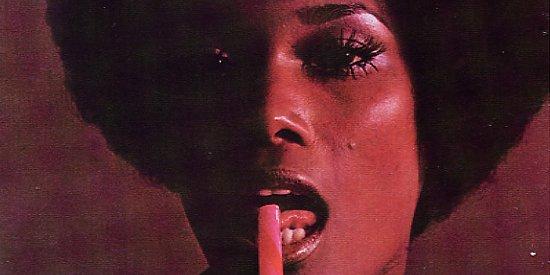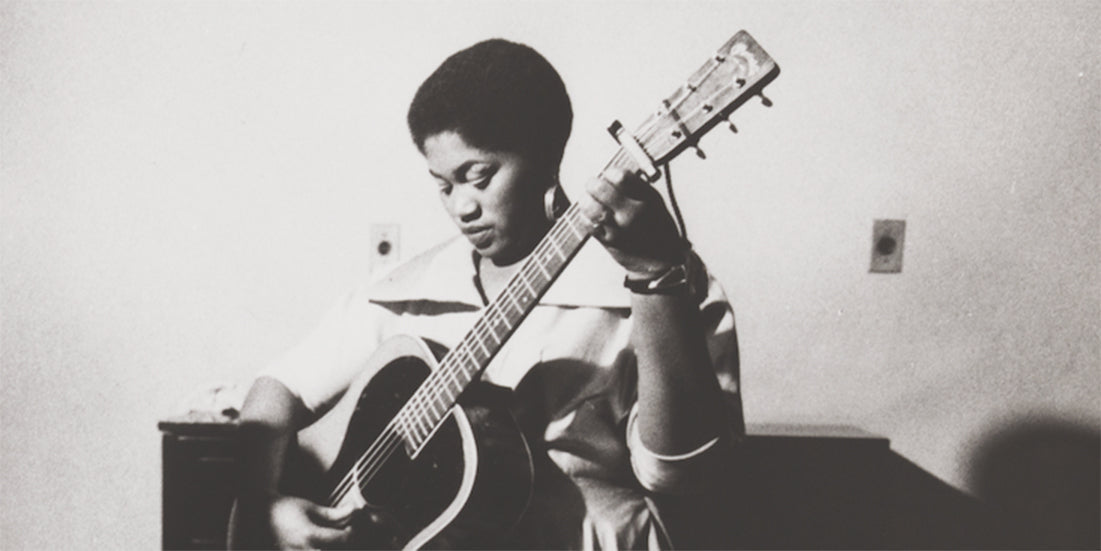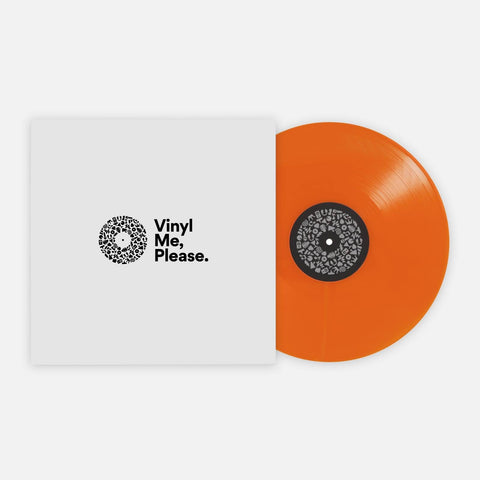The Undeniable Soul of Freddie Roach
On ‘Brown Sugar,’ the jazz organist’s landmark fourth record and the history of his instrument in the genre
The organ, as beloved as it is in modern jazz, didn’t come by this love easily. Like so much of the music we’ve come to love, the jazz organ is that holiest of the unholy — the sacred and the profane — walking in close step. When Laurens Hammond of Evanston, Illinois, introduced the instrument, it wasn’t because he was a great lover of music, secular or otherwise. Hammond was, by all accounts, tone-deaf. Like many inventors, Hammond saw dollars. The bulky Wurlitzer had been the main organ brand since the early 1900s, but, as Robert M. Marovich explains in his book, A City Called Heaven: Chicago and the Birth of Gospel Music, Hammond “believed that an instrument with a faster, more responsive keyboard than the pipe organ would be of interest to professional organists.”
The first version, the Model A, was released in 1935, and found fans in Lawrence Welk and George Gershwin. Not a bad start, by any means, but the organ already had a home — the church. How would this new invention go over on a Sunday morning? One musician expressed fears about this “pipeless organ,” according to Marovich, and worried that because “the tone [was] decidedly different from that of general church organs, being too ‘eerie’ in quality,” it would never be accepted in a house of worship. But to paraphrase Martin Luther King Jr., 11 o’clock on Sunday morning is the most segregated hour in American life. So, while it may have been true that some churches, in some places, and some congregants may have been put off by the sound of the Hammond, it wasn’t the case in every church.
In 1939, the first of the Hammonds started making their way into Black musical life. Chicago’s St. Edmond’s Episcopal Church started using the organ in its services that year, as did the First Church of Deliverance. Not to be outdone, the William H. Leonard Funeral Home used the Hammond as a customer lure, noting that they were the “only colored mortuary in Chicago equipped with a Hammond electric organ,” according to Marovich. But just having the instrument doesn’t make history. What makes history, musical history anyway, is the sound. The Hammond had a distinct one: It could sound soulful and moody, but also hit those sweet spots where music and spirit become intertwined — where the heavens and the earth are somehow all around, existing all at once.
“It was the most unusual thing you ever heard,” Kenneth Morris, the musical director at First Church of Deliverance, told Bernice Johnson Reagon in a 1987 interview for her book, We'll Understand It Better By and By: Pioneering African American Gospel Composers. “People came from all over just to hear me play that organ. Oh yes, it swept! It swept!” And though St. Edmond’s may have bought their organ first, the First Church of Deliverance was the one that forever melded it with gospel, and ultimately with Black music. The sound of the Hammond would become the sound of the Black church. Organist Freddie Roach had grown up with that sound, and he understood it deeply. It called him, soothed him, energized him. Writing in the liner notes of his 1963 record Mo’ Greens Please, he marveled at “The wonder of that organ as it raised the choir, blending so well until it too, became a choir, coaxing, pleading, begging, commanding. Everybody sing! Everybody join in!”
Music is evolution. It’s not a static line moving from generation to generation, unchanged, untouched. It’s a constant shifting. Slight movements. Seismic changes. All points in between. Gospel was no different, and the Hammond was no different. While the Model A got things started, it was another Illinois resident who took the Hammond to new places.
As good as the Model A was, there was something missing. Musicians were complaining about the tone of the organ and the way it lacked warmth. Donald James Leslie, a radio repairman from Danville, about 150 miles from Chicago, was working on improving that sound. Through countless days and nights, Leslie started experimenting. He created a speaker that he dubbed the “Vibratone,” or “Hollywood Speaker,” which brought those warm tones to life. His speaker started production in 1940, and was eventually added to the Hammond. By 1955, the Hammond B3 organ with Leslie’s signature speaker was the sound of gospel.
Soul is one of those things that is nearly impossible to describe. You know when you see it, hear it, feel it. Author Claude Brown described it this way in his book, Manchild in the Promised Land: “‘Soul’ had started coming out of the churches and the nightclubs into the streets. Everybody started talking about ‘soul’ as though it were something that they could see on people or a distinct characteristic of colored folks.”
Maybe soul is the convergence of power and sadness and strength and despair and hope, and the way it comes out in plaintive cries or church shouts or pages filled with words that capture moments in all their quiet beauty. Maybe it’s pride or recognition, seeing yourself in someone else, letting it reflect back to you in a knowing nod. Maybe it’s love, and the way that brown skin glows in the sunshine, the way that tight curls frame a face, the way that the past is carried into the future. “Wow! Man, it’s a beautiful thing to be colored ... Look at us. Aren’t we beautiful?’” That’s how Brown put it. It’s hard to see, but it’s there. Soul just is.
The Black church in mid-century America had soul. And once the Hammond was added to the mix, it was a force — possibly one that was moving too fast. As journalist Lacy J. Banks wrote in Ebony in 1972, the addition of the organ and all of its soulful sounds was controversial: “Preachers and ministers of music opposed the new sound, fearing its ‘jazziness’ threatened the established liturgical mood.” They feared this new style was “trying to turn the church into a nightclub,” according to Banks. With this mix of the spirit and the flesh came a new sound. With one foot in the church and one in the streets, a new era of jazz was arriving. Soul jazz was the holy, the dirty, the heavenly, the wicked. It was dancing close in sweaty clubs on Saturday, and getting to church on time on Sunday. Soul jazz was a blend of the traditional with the innovative.
Coming out of the hard bop of the 1950s and ’60s, soul jazz was a genre that managed to combine the ways and sounds of bop with that indefinable thing called soul. Black musicians were turning away from the more conventional sounds of bop, and moving toward something that would integrate their church-going childhoods and their club-going adulthoods. And as Lerone Bennett Jr. wrote in Ebony in 1961, “Negro musicians for perhaps the first time in jazz history have been in a position to cash in on a commercialization of the Negro folk idiom.” This was their music, their histories and their stories, and they had something to say.
Freddie Roach was born in the Bronx on May 11, 1931. Music was an important part of his family lineage. His mother played organ in the church, his grandmother was a concert pianist and choir director at a Baptist church in New Jersey, and one of his uncles led a big band. “I would close my eyes, listening, as the organ interpreted each word from the pulpit, framed them with sound and provided a sonorous carpet to my ears,” Roach wrote in the Mo’ Greens Please notes. That family musical heritage and that thrill from its sounds is what brought him to the organ. His uncle taught him some piano, but when Freddie moved in with an aunt who had an organ, his whole world changed. When he was older, he attended the Newark Conservatory, honing his skills enough to go pro at 18. He joined a band called the Strollers, led by Grachan Moncur III.
After a stint in the Marines, Roach came back to New York and played gigs with Cootie Williams and Lou Donaldson, among others. At the end of the 1950s, he made a permanent home in Newark, New Jersey. Newark may be one of those places that doesn’t seem like a musical city. But according to historian Barbara J. Kukla’s Swing City: Newark Nightlife, 1925-50, in 1938, Newark had one bar for every 429 residents, and because there were so many, it “was a great place to launch a show business career.” The city’s central ward was the beating heart of Newark’s Black community, and greats like Sarah Vaughan, Hank Mobley and Wayne Shorter all took to stages in their hometown at clubs like Six Steps Down, Lloyd’s Manor, Howard Bar and Grill, and Adams Theater. Duke Ellington once said, according to Amiri Baraka, “The greatest place to listen to Black music is in Newark.”
Those who knew, knew.
Baraka, who was Newark through and through, wrote that the city has a jazz heritage that has faded from memory through the years: “When the best legacy, the highest level of civilization that city has contributed to, is hidden or forgotten, and the city becomes identified with a set of negative or dangerous characteristics, then it will look like Newark looks after five p.m. on any evening, like a ghost town, or a warehouse for the moneymaking operations of a people that do not live there.” Its jazz history is a strong one, and if we’re going to take Baraka’s word for it, it’s also the “Organ funk capital of the universe.”
Jimmy McGriff, Rhoda Scott and Larry Young are all organists who’ve called the city home. Roach’s time there saw him playing with the likes of Cannonball Adderley and Jackie McLean at jam sessions at the city’s Club 83, a nightclub owned by Negro Leagues impresario Effa Manley. But maybe the most important collaboration for Roach was when he met saxophonist Ike Quebec. Quebec had signed with Blue Note in 1944, and liked Roach’s sound. He asked Roach to join his band, and Roach’s big break was on two albums Quebec recorded in 1961 — Heavy Soul and It Might As Well Be Spring — leading to his own set as leader in 1962.
Quebec had eschewed a pianist on those sessions, opting instead for Roach on the organ to round out his trio. Roach had started with the piano, and brought that touch to the organ. “A lot of the organ players were not piano players,” saxophonist Buddy Terry said in a 2006 interview. “They played the keyboards but they really became organ players. Freddie brought the piano approach to the organ.” And on his debut as leader on 1962’s Down to Earth, Roach brought that same approach.
For an album that bears his name as leader, Roach takes a reserved approach. The places where he stands out carry just as much weight as the ones where he holds back, something he prided himself on. He told Nat Hentoff, jazz critic and writer of the Down to Earth liner notes, “I have been playing for some years with a lot of hornmen I admire a great deal. Therefore, I couldn’t allow myself to overpower them. I had to learn to play down so that I could listen to and learn from them.” He followed the record up with two more releases in 1963 before recording Brown Sugar in 1964.
His first three albums introduced him to the world, but Brown Sugar showed it who he was.
Brown Sugar was the album that Roach made to capture the energy of soul jazz. To somehow take the sounds in the city, in the clubs, and bring them to a record. In his original liner notes, Roach writes that the album is an ode to late nights and loud clubs, to backs damp with sweat, arms wrapped around waists. “Not caring for the moment about troubles or problems,” he wrote of people dancing, “their bodies quivering under smiles that seemed to promise ‘after the dance.’” After talking to Alfred Lion, president of Blue Note, they decided that the album needed to be made up of standards — not the standards of the stage or screen, but the standards of the people. “To get the ‘soul,’” Roach wrote, “I decided to do show soul tunes.”
There is soul, however you define it, running throughout the album — and it starts with the cover.
The model on the front of the album is Clara Lewis Buggs, and she was fresh off of her 1961 win at the African Nationalist Pioneer Movement’s Miss Natural Standard of Beauty pageant. Soul wasn’t just a feel; there was also a look, and Lewis had it. She was part of a Harlem-based modeling agency called Grandassa that was sponsored by the African Jazz-Art Society (AJAS), later called the African Jazz-Art Society & Studio, an organization founded in part by photographer Kwame Brathwaite and his brother Elombe, then known as Ronnie and Cecil.
As historian Tanisha C. Ford explains in Liberated Threads: Black Women, Style, and the Global Politics of Soul, Grandassa “was known for its ‘Black is Beautiful’ slogan and black cultural nationalist politics.” Grandassa models were a visual representation of what Black beauty could be when the beauty standards were set by Black people. Brown skin in a range of shades, full lips, tight curls, “Grandassa models were not trying to integrate the white world of haute couture; they were creating a new industry driven by black fashion and ‘natural’ models,” Ford writes.
The models also served another purpose, signaling what a listener could expect from an album. AJAS cultivated relationships with soul-jazz artists, and Grandassa models graced the covers of albums by Lou Donaldson, Big John Patton and Brown Sugar, all shot by Kwame. These models, as much as the music, screamed pride, beauty and, above all else, soul. A Grandassa model on the cover coupled with soul-jazz in the grooves “helped [AJAS] spread its vision of African blackness outside of the United States,” according to Ford.
The outside of the album matched the inside. As Roach wrote, these were soul standards, songs that transported him back, songs that would take us all with him. This is “a few ounces of black plastic,” he wrote, “grooved with the mood of an evening spent playing the blues.” From the opening title track — the only one on the album written by Roach — he shows his signature laid-back style, coming in when needed, hanging back to let saxophonist Joe Henderson shine. Henderson had long been a fixture at Blue Note, playing with Kenny Dorham, Blue Mitchell and Lee Morgan, among many others. On this opener, Henderson shows why he was so in-demand.
There’s a bit more of the classic, organ-heavy, soul-jazz with “The Right Time,” a song made famous by Ray Charles. That’s likely because there’s no other way to approach this song then with all you have, to add just the right amount of rhythm, no other way than to drape the song in the perfect amount of cool sexiness. And just when it feels like the heat is too much, too electric, he slows it down with the Quincy Jones co-written “The Midnight Sun Will Never Set.” This is eyes closed, held close, drift off, squeeze tight kind of music. It’s punctuated by the soft strumming of guitarist Eddie Wright, who had joined Roach on his second release, Mo’ Greens Please. Also rejoining Roach on this release is drummer Clarence Johnston, who’d been with Roach since his debut album. And with the way Roach lays back, Johnston’s foundation is even more important, and that’s the way he liked it, telling a Los Angeles Times reporter in 1997: “After the leader counts the tempo off, the drummer becomes the bandleader. That’s when my fun begins.”
The album ends with a last call of sorts. “All Night Long” is the sound of night turning to day, of rumpled clothes, of lingering kisses. “I watched that multitude of people pulsing, boiling, melting, looking for all the world like sweet fudge,” Roach wrote. And here it is.
Some people are larger than life. They live fast and hard with trails of fire behind them. Those are the people it’s easy to write about. If you can’t pull a good story out of all of that heat, what are you even doing? That’s not Freddie Roach. His life seemed to be a lot like his playing, subtle, leaving room for others to shine. Of the pieces you can assemble from the few interviews and remembrances of him, the picture is that of a man who loved. He loved his work, loved his hometown, loved his colleagues. There’s also a sense of his art, the way he must have agonized over each word in his liner notes — most written by him. There’s a sense that he wants us to go where he follows, word by word, note by note.
After one more record at Blue Note, Roach headed to Prestige, where he recorded another three albums as leader before abruptly moving to California in the 1970s. “I don’t have a clue as to the reason,” Buddy Terry told interviewer Pete Fallico in 2006. “I had no idea, I thought maybe he just wanted to change locations and try something different.” Roach was also a playwright and poet — both of which he did in Newark, launching a Black theater company, Avitar Musical Productions, in a Newark rooming house’s converted garage — and perhaps the distance gave him the opportunity for reinvention and a chance to go deeper with his other work. Roach died in California in 1980, and much of what he did there is a mystery.
But we have all of the answers we need. They’re in the music. In the sounds and silences. In the places where Roach all but steps away, letting the spotlight shine on his band, and equally in the places where you can hear that young boy who loved to be wrapped in the music every Sunday give that love back to us. “When it’s your turn to solo,” Roach told Hentoff, “the only way you’re going to make yourself distinct from other organists is by showing how you can control power to express everything you want to say, no matter how fragile.”
Ashawnta Jackson is a writer and record collector living in Brooklyn. Her writing has appeared at NPR Music, Bandcamp, GRAMMY.com, Wax Poetics and Atlas Obscura, among others
Related Articles
Join the Club!
Join Now, Starting at $36Pages







